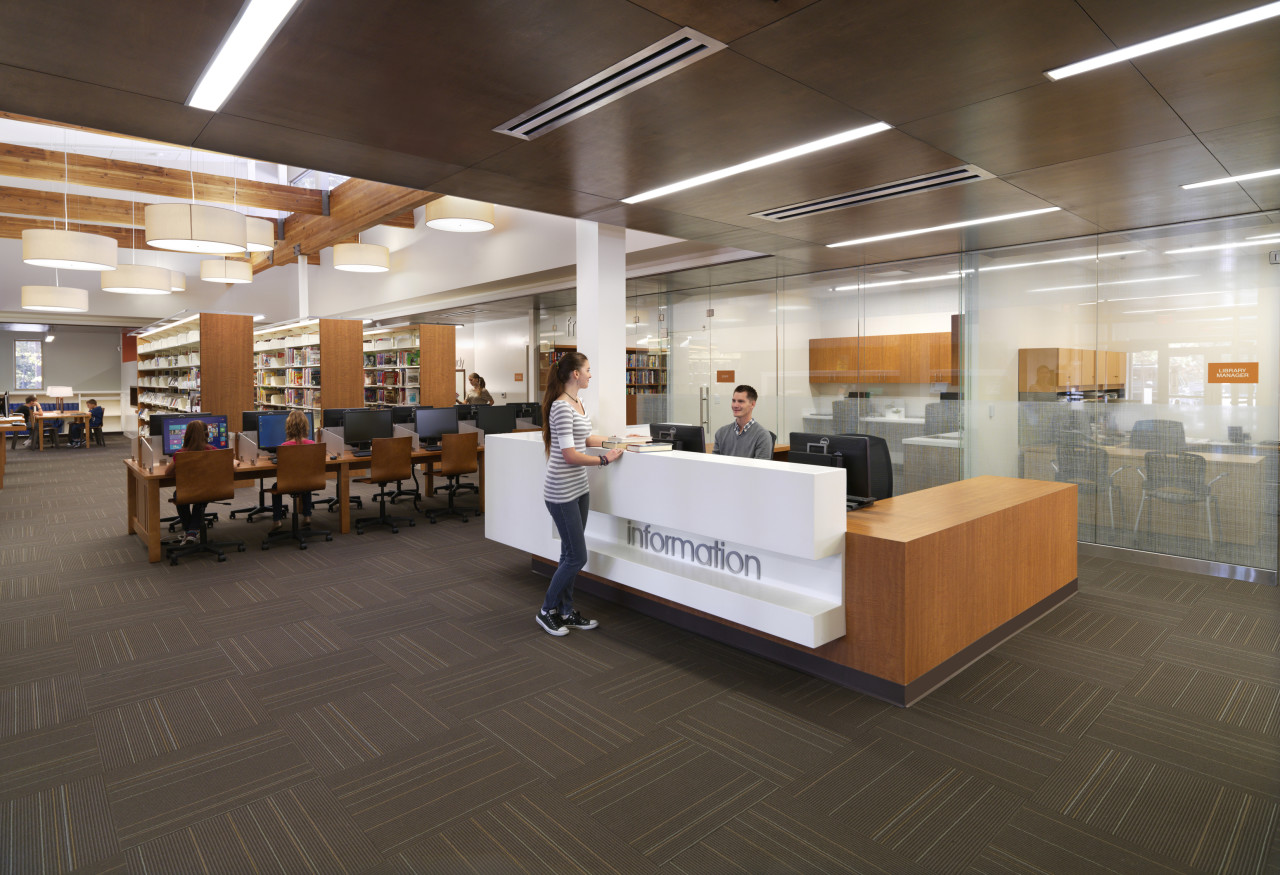From smartphones to self-service kiosks, advances in technology have dramatically changed how we interact with the world around us in our private and professional lives, and how we navigate and use public spaces. We can now check out library books directly from mobile devices and or even print out a juror badge from a court’s digital check-in system, for example. Most important, technology is also helping to improve public safety, civic employee workflows, visitor navigation, and energy use.
By prioritizing technology-driven civic building renovations, administrators can provide better service to their communities and create more efficient public spaces.
How Civic Building Renovations Improve Staff Efficiency and Safety Protocols
New technologies exist that allow fire and police personnel to perform their jobs and serve their communities more swiftly and effectively; however, not all civic buildings are designed to best accommodate these breakthroughs. Many still only have only a handful of wall outlets to support too few computers and necessary systems, for example.
By renovating police and fire stations with design features that accommodate additional computing and mobile devices, comprehensive digital records management systems, mapping software, and computer-aided dispatch (CAD) systems, emergency response personnel can gain access to more detailed information than ever before during crisis and other situations, and improve response times.
When Oxnard, California, government officials hired HMC Architects to renovate Fire Station No. 8, we focused on improving emergency response times using systems and design features that support the latest advances in technology. Renovations included:
- Replacing the station’s outdated overhead sectional doors with electronic four-fold bay doors that open much more quickly.
- Redesigning the administrative office to allow for more computers and mobile devices.
- Mounting smart television monitors in the training room to facilitate more effective emergency-response planning and education.
- Installing desks throughout the station that include built-in outlets and device charging stations.
Technology also plays a large role in first-responder safety. The Rancho Cucamonga Fire Training Facility, also in California, is designed to teach firefighters and other emergency personnel in the region how to handle urgent and life-threatening scenarios. Our renovations feature an advanced air-filtration system that allows first responders to train with real burning wood without releasing smoke into the atmosphere. It was the first training facility in the country to use the state-of-the-art system, but it’s by no means the first civic building we’ve designed with the latest technology in mind. We consistently design with an eye on technology to improve performance and further safety standards in the civic sector.
Fostering Fluid Work Environments Using Modular Design and Mobile Workstations
Civic building renovations can also improve employee efficiency and workflow through open-office design and enhanced wireless connectivity. Layout changes, as well as furnishings and network upgrades, can better support collaboration and increase use of mobile workstations. To accomplish this, consider the following:
- Create collaborative spaces. Spaces that include wheeled chairs and modular desks with built-in outlets and charging stations allow staff to break into groups and work on projects together more easily.
- Increase wireless connectivity speed. WiFi dead zones make it difficult for employees to perform tasks on their laptops and other mobile devices. Prioritizing high connection speeds will increase mobile efficiency.
- Utilize smaller desks. Small desks will increase the amount of open space in a room. When implemented along with better connectivity, they can also encourage employees to collaborate at mobile workstations.
- Repurpose spaces. Convert an old paper-file room and other no-longer-used rooms to a computer lab or conference room.
Even small changes such as these can go a long way toward improving employee productivity.
Technology Supports Visitors as They Navigate and Use Civic Spaces
Modern technology has changed the way that visitors interact with civic spaces, including libraries, government centers, and courthouses.
Not too long ago, libraries primarily offered books and physical reference materials. Today, they also lend electronic books, music, videos, and more. Many even provide advanced computer labs and multipurpose community centers where people can gather for lectures and social events.
At the newly-renovated Idyllwild Library in California, children, teens, and adults all enjoy their own spaces. Plus, there’s a community room for larger gatherings. Each area includes desktop computers that visitors can use to check out e-books, take online classes, search for jobs, gain access to research materials and computer programs that they don’t have at home, and more.
Many courthouses and government centers have self-service check-in and information kiosks to help streamline visitors to their appointments and aid them in navigating the building. A citizen called to jury duty, seeking to register to vote, pay local taxes, or apply for a marriage license can receive department location information at these buildings quickly and on their own.
Civic Building Renovations Improve Energy Efficiency
When you renovate your civic building using the latest technology, you can also promote sustainability. At the Orchard School Library in San Jose, California, we focused on energy- and water-efficient design systems and green details, including:
- Photovoltaic panels that generate electric power through solar cells.
- Full-height glass windows that offer natural ventilation, decrease energy use, and increase daylighting to make the space more inviting and warm.
- Green-certified furnishings and finishes.
- Plumbing fixtures that reduce water use.
By making energy-efficient renovations, you’ll not only save on utility costs, but also be better equipped to meet future zero-net-energy requirements.
How to Prioritize Civic Building Renovations
Prioritizing civic building renovations requires careful planning and research. An experienced design firm can help you identify the systems and design features that will have the greatest impact on your community and your staff, and that will do so within budget. At HMC Architects, we refine our civic design ideas using comprehensive surveys and evidence-based design principles, and through detailed discussions with clients and their employees. If you’re ready to create a streamlined civic building that meets the ever-evolving needs of the public, you must place technology at the forefront of your design.







